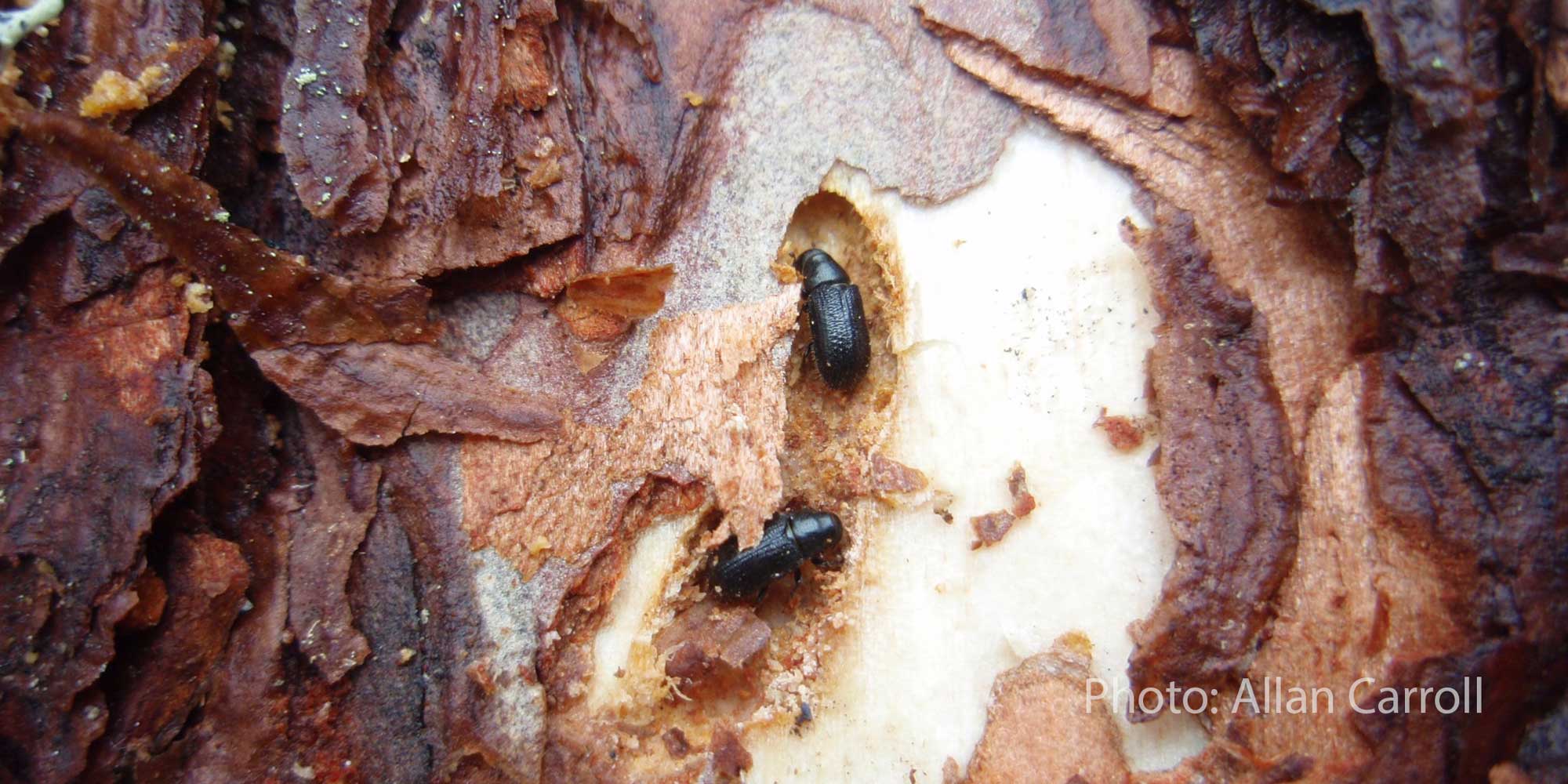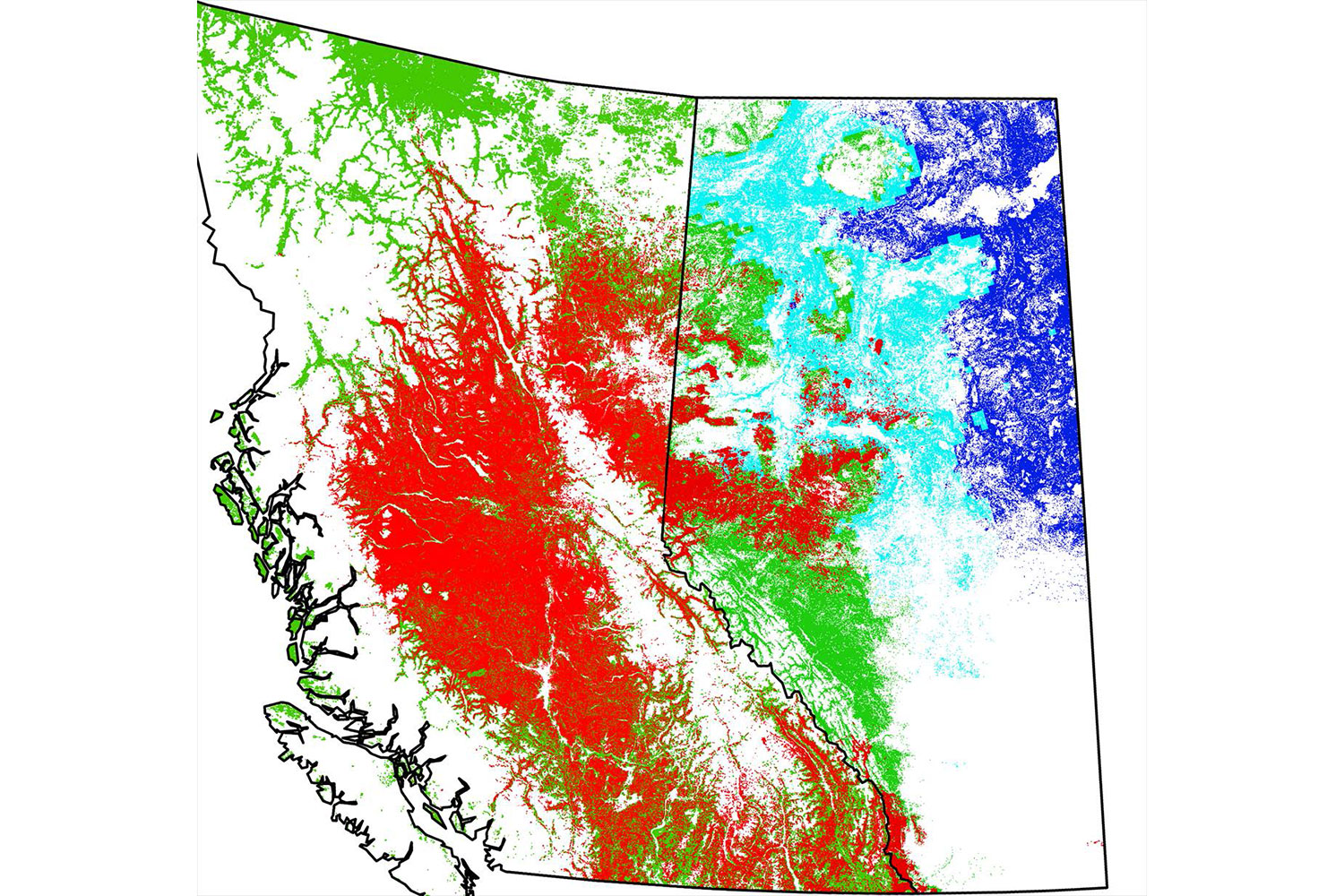
Assessing the effectiveness of Alberta’s forest management strategies against the mountain pine beetle
A decade of effort and $300M: how did we do?
Evaluate how different management strategies meet management goals. This informs management and helps prioritize objectives.
Investigators
- Allan Carroll, Dept. of Forest & Conservation Sciences, University of British Columbia
- Harry Nelson, Dept. of Forest Resources Management, University of British Columbia
- Brad Seely, Dept. of Forest Resources Management, University of British Columbia
- Clive Welham, Dept. of Forest Resources Management, University of British Columbia
Duration of Research
Nov. 1, 2013 – Jun. 30, 2015
Problem Statement
Since 2006, when MPB spread to the pine forests of north-central Alberta, the Government of Alberta has spent nearly $300 million ($266 million provincial, $18.4 million federal) on direct control efforts. Alberta’s forest industry is worth $9 billion annually, employing 38,000 workers. The industry is largely dependent on pine and is therefore at risk of significant economic loss from MPB-induced tree mortality. The primary goal of the Government’s mitigation efforts are to slow the spread of MPB into vulnerable pine-dominated watersheds of the eastern slopes and the boreal forest. Decision-makers need to understand the effectiveness of the management strategies implemented to date and their effectiveness going forward. The proposed research will evaluate the effectiveness of different management strategies in meeting management goals, along with identifying future risks to those goals. This information informs management, and helps prioritize objectives and refine management strategies. Results will also have utility in operational planning.
Objective
Evaluate the efficacy of current direct control efforts at slowing the immediate spread of MPB in comparison to alternatives strategies, one of which includes ‘do nothing’.
Methods
Following the breach of the Rocky Mountain geo-climatic barrier, Alberta Environment and Sustainable Resources Development (AESRD) has collected annually detailed data on the status of the invading MPB population, by way of its impacts on tree mortality and in numbers of infested trees destroyed (an index of potential control). These data also include direct measures of MPB productivity known as ‘r-values’, which represent the ratio of surviving offspring to parent attacks. Together with vegetation resource inventory data (AVI), these various data sets comprise rich sources of information that can be employed to construct models of the spread and impact of MPB through Alberta in the absence of management efforts (the baseline case) and against which management efficacy can be assessed. We will use an existing model of MPB population dynamics, combined with stand- and forest-level models capable of simulating the biophysical impacts of climate change (changes in precipitation and temperature), as a meta-model to investigate the effectiveness of actions to control the MPB population. The effectiveness of different control strategies will be evaluated in terms of management objectives, as assessed against alternative criteria. The latter include indicators such as timber flow, age class structure, net present value, and measures linked to indicators of habitat and forest health.
Expected Outcomes
This project will provide the first detailed assessment of the effectiveness of efforts to slow the spread of MPB across Alberta. Additionally, this work will improve our understanding of the relationships among stand characteristics, climate and MPB productivity. Furthermore, it will inform questions concerning impacts of MPB caused mortality on yield and timber supply, and fire risk modeling.
The project kicks off, led by Dr. Allan Carroll
Work progressing well: 2 of 5 objectives completed
Assessing MPB spread and efficacy of treatments has begun
The 2 year project finishes on time















